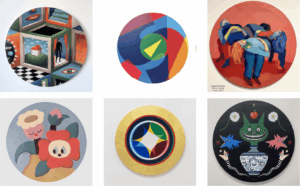In an increasingly conscious world of the need to adopt sustainable practices, innovation in eco-friendly materials has gained unique relevance. Researchers from various universities and companies around the globe are developing alternatives that not only promise to mitigate environmental impact, but also offer a range of promising applications in different sectors.
One of the most notable advancements is the creation of bioplastics from renewable sources, such as corn starch and sugarcane. Unlike conventional plastics, which can take centuries to decompose, these materials are biodegradable and can be used in single-use products, from packaging to utensils. Furthermore, research is focused on improving their strength and versatility, which could make them a viable option for the packaging and construction industry.
Another notable innovation comes from materials derived from organic waste. The implementation of recycling technology in textile production has led to the development of fibers that utilize waste from fruits and vegetables. These garments are not only environmentally friendly, but also offer unique properties, such as the ability to regulate body temperature and be water-resistant.
Advancements also extend to the construction sector. Researchers are working on the production of eco-friendly concrete, which uses industrial byproducts such as fly ash and blast furnace slag. This type of material reduces carbon dioxide emissions and also improves the durability of structures. Additionally, alternatives using natural fibers, such as hemp or flax, are being explored to create insulation materials that are both effective and sustainable.
The energy sector also benefits from these innovations, with the development of solar panels made from bio-based materials. These devices could offer a more sustainable alternative to conventional panels, which rely on non-renewable resources and have a high energy consumption in their production process.
However, the path to widespread adoption of these eco-friendly materials is not without challenges. Industries must overcome economic and technical barriers to integrate these products into their supply chains. Nevertheless, the enthusiasm for the potential of these materials is reflected in the growing number of startups and research projects dedicated to exploring new possibilities and applications.
Over time, it is expected that these developments will not only have a positive impact on the environment, but also contribute to job creation and the growth of a circular economy. The transition to a more sustainable future seems to be underway, and eco-friendly materials are a fundamental pillar of this movement.
Referrer: MiMub in Spanish












